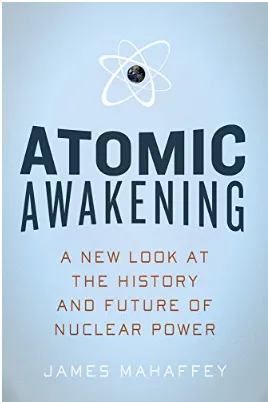
Being a Bitcoiner has plunged me down the energy rabbit hole, because as you may know, Bitcoin relies on electricity for its proof-of-work mining. Nuclear is frequently mentioned within the Bitcoin world as a source of clean and abundant energy, and Bitcoin-related podcasts frequently have guests who are nuclear scientists, engineers, and energy experts. This book was one of the recommendations I came across, and since I wanted to become better informed on the subject, I spent one of my Audible credits on it.
As always I like to get familiar with the author before I get started, and ChatGPT is an excellent tool for this. Upon asking "Who is James Mahaffey?", it states:
James Mahaffey is an American nuclear engineer and science writer. He has worked for over 25 years in the nuclear industry and has written several books on the topic, including "Atomic Awakening: A New Look at the History and Future of Nuclear Power," "Atomic Accidents: A History of Nuclear Meltdowns and Disasters," and "Essential Radio Astronomy."
Mahaffey has also served as a research scientist at the Georgia Tech Research Institute and has published numerous scientific papers on topics related to nuclear energy and engineering. He is known for his ability to make complex scientific concepts accessible to the general public and for his engaging writing style.
Both accessible and engaging it was. Atomic Awakening provides an account of the history of nuclear energy, from its precursors, to initial discovery, to present-day applications. The book covers various topics, including the events leading up to the discovery of radioactivity, the evolution and development of nuclear weapons and nuclear power.
Over the course of the book, Mahaffey emphasizes the role of key figures in the field, such as Marie Curie, Enrico Fermi, and Robert Oppenheimer, and explores the technological advancements and scientific breakthroughs that paved the way for what nuclear energy looks like today. He also discusses the risks and controversies associated with nuclear technology, including accidents and disasters such as Three Mile Island, Chernobyl and Fukushima.
Overall, it provided a well-researched and comprehensive overview of the history of nuclear technology, highlighting its potential benefits and drawbacks. Though some of the content flew right over my head, I highly recommend this book if you are seeking a primer for further knowledge in the field of nuclear power. I do believe that as much as we fiddle around with harvesting power using wind and solar, the future is nuclear. Unsurprisingly, nuclear energy projects are quietly popping around the world.